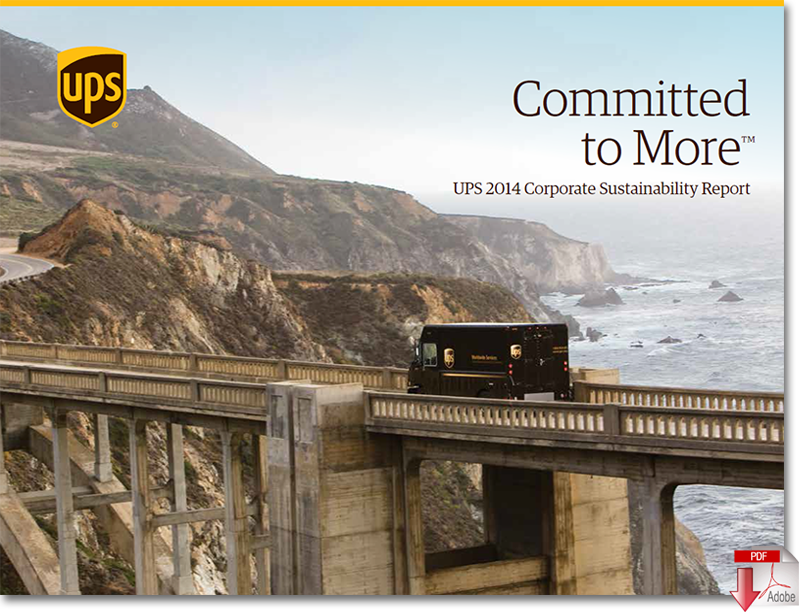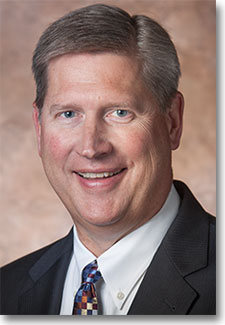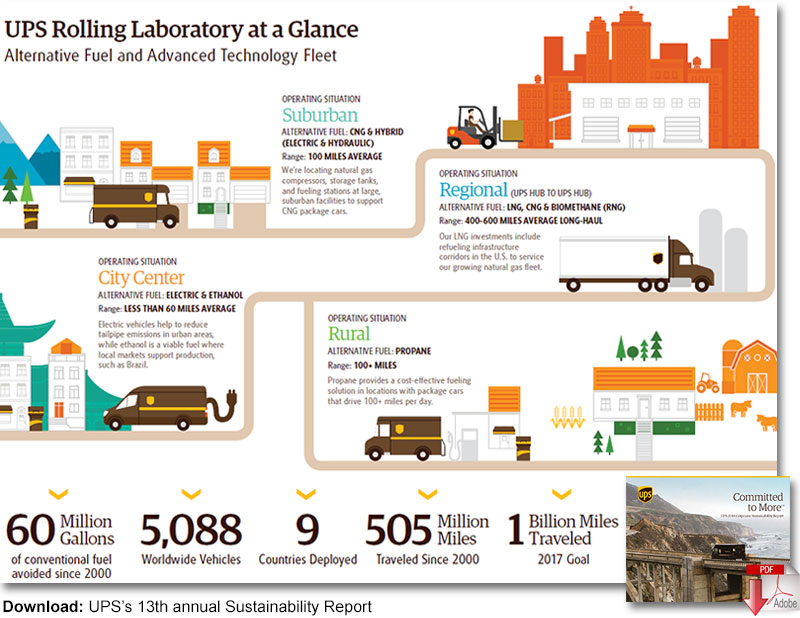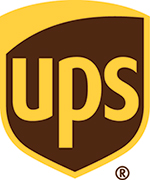UPS Makes Substantial Move To Renewable Fuels

The agreements with three leading suppliers of renewable fuels, secure access to an advanced renewable diesel fuel in order to meet the company’s objectives for alternative fuel utilization.
UPS announced agreements for up to 46 million gallons of renewable fuels over the next three years, constituting a 15-fold increase over prior contracts and making UPS one of the largest users of renewable diesel in the world.
The agreements with three leading suppliers of renewable fuels, secure access to an advanced renewable diesel fuel in order to meet the company’s objectives for alternative fuel utilization.
Neste, Renewable Energy Group (REG) and Solazyme will supply renewable diesel to UPS to help facilitate the company’s shift to move more than 12% of its purchased ground fuel from conventional diesel and gasoline fuel to alternative fuels by the end of 2017.
UPS has previously announced a goal of driving one billion miles with our alternative fuel and advanced technology vehicles by the end of 2017.
“Advanced alternative fuels like renewable diesel are an important part of our strategy to reduce the carbon emissions impact of our fleet,” said Mark Wallace, UPS senior vice president, global engineering and sustainability.
“We have used more than three million gallons of renewable diesel to date with positive results. Renewable diesel has a huge impact significantly reducing lifecycle greenhouse gas emissions by up to 90 percent less versus conventional petroleum diesel.
Renewable diesel also performs well in cold weather, does not have any blending limitations and can be easily ‘dropped in’ to our fuel supply chain without modifications to our existing diesel trucks and equipment.”
Renewable diesel is an advanced hydrocarbon-based fuel that is fully interchangeable with petroleum diesel and offers superior performance and benefits, much like how synthetic lubricants are used in cars instead of petroleum-based lubricants.
Bio-based feedstocks from fats, plant oils and waste residues are converted to renewable diesel using advanced refining technologies.
These new bio-refineries also have the capability to produce other renewable fuels such as renewable jet fuel, renewable gasoline and renewable propane.
“UPS believes these agreements are especially important because they will help stimulate demand for investment in refinery technologies and sustainable feedstocks needed to produce renewable fuels at a total cost that is comparable to more carbon-intensive petroleum fuels,” said Wallace.
UPS has been using renewable fuels for more than a year in trucks operating in Texas and Louisiana. The new agreements pave the way for expanded use across the U.S. and potentially in parts of Europe.
Neste, headquartered in Espoo, Finland, is the world’s largest producer of renewable diesel. Neste produces NEXBTL renewable diesel from a variety of feedstocks including more than half from waste and residues.
REG, headquartered in Ames, Iowa, produces renewable hydrocarbon diesel fuel from waste vegetable oils and animal fats at its Geismar, Louisiana, bio-refinery as well as biodiesel at nine bio refining locations in the U.S.
Solazyme, headquartered in San Francisco, produces a blended fuel made from microalgae and other renewable feedstocks.
“Developing alternative, economically viable energy sources is critical to UPS’s commitment to reduce our environmental impact, improve communities and foster economic development opportunities around the world,” Wallace said.
UPS Accelerates Progress Toward Sustainability Goals
Nearly tripled number of miles driven by alternative fuels and advanced technology fleet in 2014

UPS’s 13th annual Sustainability Report, highlighting its growing investment in alternative fuel and advanced technology vehicles and commitment to log 20 million hours of volunteer time by the end of 2020.
With its “Rolling Laboratory” approach, UPS accelerated its investment in an alternative fuel and advanced technology fleet of more than 5,000 vehicles last year, increasing the number of vehicles by 61 percent over 2013 and adding 1,100 natural gas vehicles. According to the report, UPS logged 154 million miles in 2014 toward its goal of driving 1 billion miles with the fleet by the end of 2017 – an almost threefold increase from 2013.
“It took 13 years to drive the first 350 million miles with our alternative fuel and advanced technology fleet,” said Rhonda Clark, UPS chief sustainability officer and vice president of environmental affairs. “In just one year we were able to build dramatically on that number and we are now more than halfway to our 2017 goal. With continued investments in this fleet, we are doing our part to help transform the transportation industry.”
UPS reported that 5.4 percent – or 25 million gallons – of its total gas and diesel purchased in 2014 was displaced with alternative fuels including natural gas, propane, ethanol, biomethane, renewable diesel, and electricity. The commitment to alternative fuel and advanced technologies will allow UPS to reduce its annual use of gasoline and diesel 12 percent by the end of 2017.
The report also highlights two global trends facing the transportation and logistics industry: an increase in consumer e-commerce and growth in urbanization. E-commerce shipments are typically business-to-consumer (B2C) and fewer packages per stop, compared to business-to-business (B2B) deliveries.
This means carriers may be driving more miles and using more fuel to deliver fewer goods.
While e-commerce drove a 6.8 percent increase in package volume globally in 2014, UPS emitted fewer greenhouse gas (GHG) emissions per package, with total carbon emissions growing just 3.3 percent. The 14.1 percent reduction in carbon intensity achieved since 2007 is equal to removing more than 380,000 passenger vehicles from the road for one year.
With consumer deliveries expected to grow to half of UPS’s U.S. business volume by 2019, the company deploys innovative strategies and technologies to address this challenge, including the ORION routing system, UPS My Choice™ service and UPS Access Point™ locations. These services give consumers control over when and where they receive deliveries, which helps UPS avoid unnecessary miles.
Global population shifts from rural to urban areas translates into more congestion, noise, and pollution in cities. UPS works closely with its customers, government leaders and other stakeholders to develop new delivery methods to reach dense urban areas.
For example, UPS has 28 electric trucks operating in London and expects to add another 40 within the next few years to reach its goal of having an all-electric fleet in London’s city center. UPS also operates 80 electric vehicles in cities across Europe including Amsterdam, Rotterdam and Hamburg and in some urban centers the company is using bikes for deliveries.
“Urbanization and e-commerce growth create unique challenges for us, our customers and the communities we serve,” continued Clark. “UPS is committed to meeting those challenges, minimizing our impact on the environment and paving the way for a more sustainable future.”
UPS also continued its long history of giving back to the community with a 2014 pledge to commit 20 million volunteer hours by the end of 2020. UPS employees and retirees, friends and families logged 7.2 million volunteer hours since 2011. The company expects the 20 million hours of volunteer work to translate into nearly a half-billion dollars in economic impact to nonprofit organizations around the world.
Assuring humanitarian relief reached those in need around the world as quickly as possible continues to be a UPS priority. UPS employees and the global logistics network coordinated more than 263 humanitarian relief shipments of food, health and emergency goods in 43 countries.
The effort provided funding and logistics support to areas affected by the Ebola epidemic, the Syrian refugee crisis and severe weather in the Philippines and U.S.
Article Topics
UPS News & Resources
UPS reports first quarter earnings decline Amazon Logistics’ Growth Shakes Up Shipping Industry in 2023 FedEx and UPS to Charge Additional Delivery Fees in Major U.S. Cities Parcel Experts Weigh in on New Partnership Between UPS and USPS Parcel experts examine the UPS-United States Postal Service air cargo relationship amid parcel landscape UPS To Become USPS’s Main Air Cargo Provider, Replacing FedEx UPS is set to take over USPS air cargo contract from FedEx More UPSLatest in Supply Chain
How Supply Chains Are Solving Severe Workplace Shortages SAP Unveils New AI-Driven Supply Chain Innovations How Much Extra Will Consumers Pay for Sustainable Packaging? FedEx Announces Plans to Shut Down Four Facilities U.S. Manufacturing is Growing but Employment Not Keeping Pace The Two Most Important Factors in Last-Mile Delivery Most Companies Unprepared For Supply Chain Emergency More Supply Chain
















